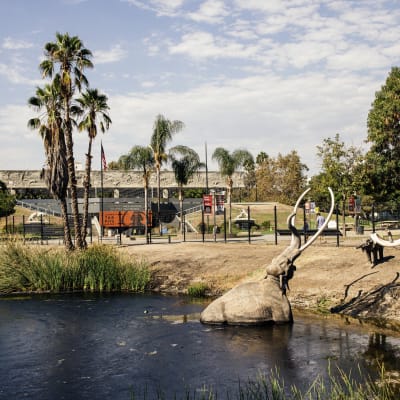The La Brea Tar Pits, also known as the Page Museum at the La Brea Tar Pits, is a complex of tar pits and an associated museum located in the urban center of Los Angeles. The tar pits themselves are a cluster of naturally occurring asphalt deposits, which have been seeping up from the ground for tens of thousands of years.
The tar pits have been a source of fascination for scientists and visitors alike since the late 19th century, when they were first discovered by oil prospectors. Over the years, numerous fossils have been excavated from the tar pits, including those of mammoths, saber-toothed cats, dire wolves, and other Ice Age animals. These fossils have provided scientists with valuable information about the biodiversity and evolution of the Los Angeles area over the past 50,000 years.
The on-site museum at the La Brea Tar Pits features a wide variety of exhibits that explore the natural history of the area. Visitors can see reconstructed skeletons of many of the animals that once roamed the Los Angeles basin, as well as interactive displays that explain the process of fossilization and the work of paleontologists. The museum also offers tours of the tar pits, which provide visitors with a firsthand look at the fossil excavation process.
In addition to the tar pits and the museum, the La Brea Tar Pits complex also includes a park and gardens that showcase the local flora and fauna of the area. The park is a popular destination for visitors and locals alike, and it provides a serene oasis in the middle of the bustling city.
Overall, the La Brea Tar Pits are a unique and fascinating attraction that offer visitors a glimpse into the prehistoric past of Los Angeles and the Ice Age animals that once called the area home.



























